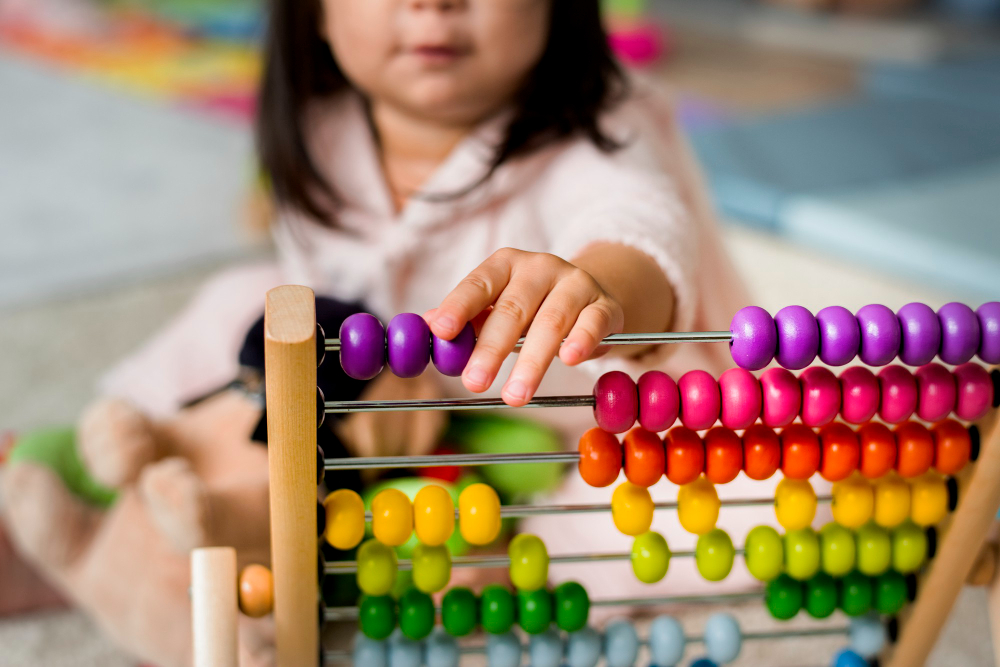Math is one of the most important subjects to learn in Singapore. The primary school math syllabus from the Ministry of Education (MOE) covers the mathematical foundations that children need to know from Primary 1 to Primary 6, with concepts ranging from simple addition to algebra. The MOE has ensured that the Singapore primary school math syllabus is structured evenly and appropriately among its six primary levels. This allows children to gradually learn math throughout primary school without fear of overwhelming them. Singapore’s primary school math syllabus focuses on three main categories, which are:
-
- Numbers and algebra (note: students will only start learning algebra in Primary 6)
- Measurement and geometry
- Statistics
If you don’t know how to prepare your child to learn math in primary school, don’t worry! In this article, we will show you an outline of the math syllabus for each primary year. By being aware of the concepts children will learn in school, parents and guardians can be prepared to help their kids’ learning experience!

Primary 1
First and foremost, the Primary 1 math syllabus introduces students to the starting point or foundation of each math category. The concepts that students will learn under the “Numbers” category include:
- Counting from 1 to 100
- Introducing math problems using common math symbols, from addition to division
- Counting amounts of money
Meanwhile, the math concepts in the “Measurement and Geometry” category include:
- Measuring length using centimeters (cm)
- Identifying the time
- Introducing 2D shapes, from squares to quarter circles
Finally, the concepts students will learn under “Statistics” include:
- Reading and understanding picture graphs
Primary 2
The math syllabus for Primary 2 expands on what the students have learned while also introducing them to new concepts. The concepts that students will learn under “Numbers” include:
- Solving math problems using numbers until 1,000
- Introducing fractions
- Counting and converting money in dollars and cents
Meanwhile, the concepts in “Measurement and Geometry” include:
- Measuring length using meters (m)
- Measuring mass using kilograms (kg) and grams (g)
- Measuring volume of liquid using litres (l)
- Telling the time in hours and minutes
- Identifying 2D shapes, such as quarter circles
- Introducing 3D shapes and its math formulas
Finally, the concepts students will learn under “Statistics” include:
- Reading and understanding graphs using scales
Primary 3
Primary 3’s math syllabus offers not only similar math concepts to Primary 2, but also an introduction to more difficult math problems. The concepts that students will learn under “Numbers” include:
- Solving math problems using numbers until 10,000
- Introducing equivalent fractions
- Counting money with addition and subtraction
Meanwhile, the concepts in “Measurement and Geometry” include:
- Measuring length using kilometers (km)
- Measuring liquid volume with mililitres (ml)
- Counting time in seconds and 24-hour format
- Introducing area and perimeter formulas for 2D shapes
- Introducing angles and lines
Finally, the concepts students will learn under “Statistics” include:
- Reading and understanding bar graphs
Primary 4
The math syllabus for Primary 4 increases the difficulty level of old and new math concepts for students. The concepts that students will learn under “Numbers” include:
- Solving math problems using numbers until 100,000
- Introducing factors and multiples
- Expanding on math problems using fractions
- Introducing decimals and its operations
Meanwhile, the concepts in “Measurement and Geometry” include:
- Counting time in seconds and 24-hour format
- Identifying the area and perimeter for 2D shapes, particularly squares and rectangles
- Measuring angles in degrees
- Identifying line symmetry
Finally, the concepts students will learn under “Statistics” include:
- Reading and understanding table and line graphs
Primary 5
Singapore’s Primary 5 math syllabus focuses on more difficult operations of math and introduces a number of new concepts for students. The concepts that students will learn under “Numbers” include:
- Solving math problems using numbers until 10 million (note: students will begin to not use calculators to solve these problems)
- Solving math problems with fractions
- Expanding on math problems using decimals
- Introducing percentage formulas
- Introducing ratio
- Introducing rate and speed
Meanwhile, the concepts in “Measurement and Geometry” include:
- Measuring areas and properties of a triangle
- Measuring the volume of cube and cuboid
- Expanding on math problems with angles
- Identifying line symmetry
Finally, the concepts students will learn under “Statistics” include:
- Identifying the average of a data set
Primary 6
Finally, the math syllabus for Primary 6 concludes all of the math concepts that students learn in primary school, with the final syllabus involving math problems of the highest difficulty level among all primary school levels. The concepts that students will learn under “Numbers” include:
- Solving math problems with fractions without using calculators
- Expanding on math problems using percentages
- Measuring ratio with fractions
- Measuring distance, time, and speed
- Introducing and measuring algebra
Meanwhile, the concepts in “Measurement and Geometry” include:
- Measuring the area and properties of a circle
- Expanding on math problems with cube and cuboid’s volume
- Visualizing and associating 2D shapes with 3D solids
Finally, the concepts students will learn under “Statistics” include:
- Reading and understanding pie charts
Start learning the syllabus with Practicle!
Now that you are aware of the concepts that your child will learn, you will have an easier time helping them learn math! If you need additional resources, you can also check out Practicle’s self-learning app! By transforming difficult math problems into fun games, Practical allows children to enjoy learning math independently using their own devices. What’s better is that our app’s syllabus aligns not only with the latest 2021 math syllabus from Singapore’s MOE, but we’re also endorsed by the Education Alliance of Finland! You can try out our 7-day free trial or contact us to learn more!

Thank youu so much for this!! Now, I can prepare for the school year much better!